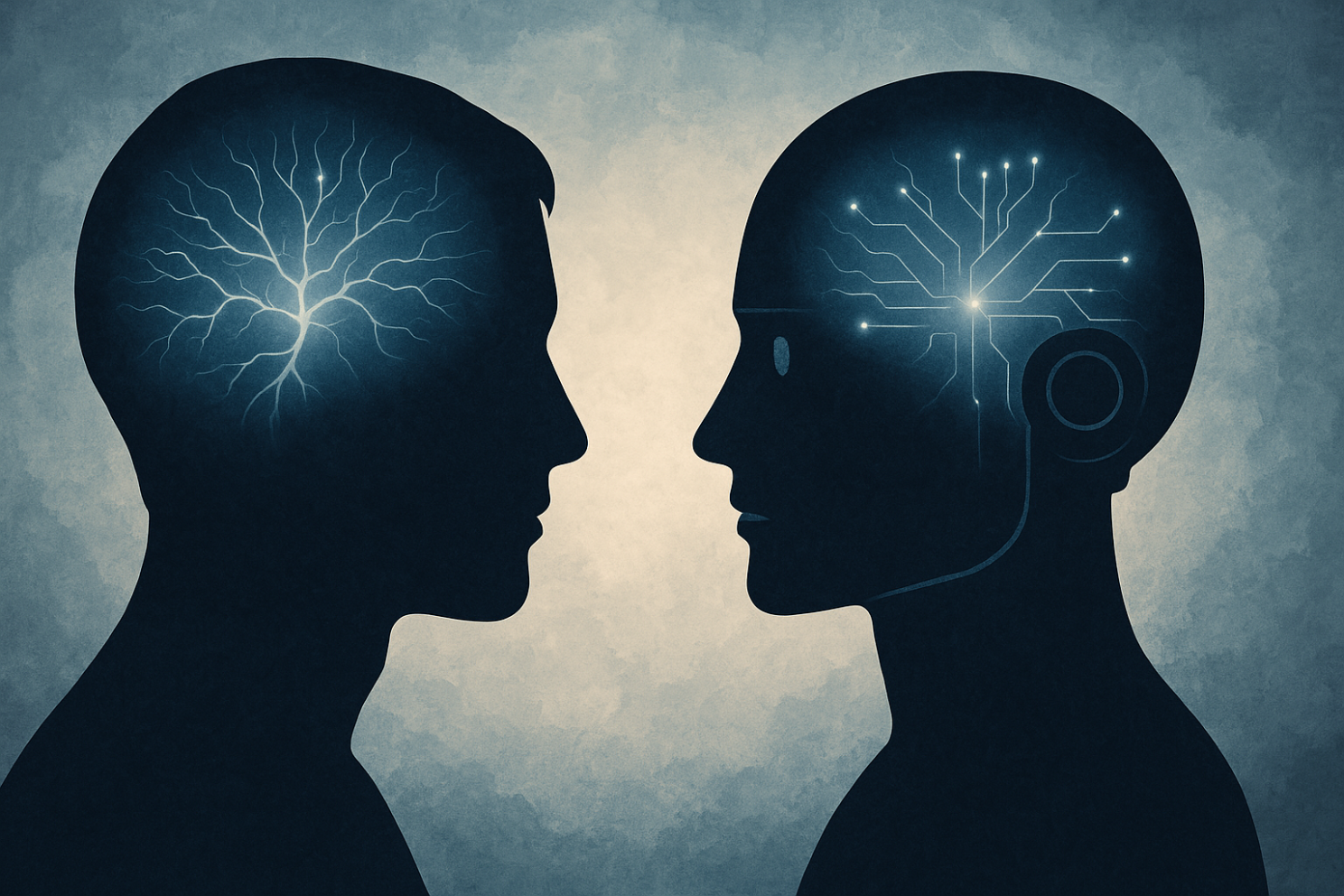From Aristotle to algorithms: How AI transforms our understanding of ourselves

- marketing
- Categories: Isidoros' blogposts
- Tags: AI, CX, Loyalty
Prefer listening? I transformed this article into a podcast using Google’s NotebookLM. It’s surprisingly accurate and even expands on some of the ideas. Give it a listen!
Reality reveals itself in fascinating layers, much like the concentric layers of an onion, each inviting us to peel deeper and uncover hidden truths beneath the surface. Just as each onion layer reveals another subtly different beneath it, our scientific exploration uncovers progressively more detailed and profound understandings of reality.
Consider the seemingly simple action of pushing a glass across a table.
- Aristotle’sintuitive observation suggested objects have a natural inclination to reach a state of rest, predicting the glass would eventually halt without further exploration into underlying mechanisms.
- Newton, however, revolutionized our understanding with precise laws of motion, providing mathematical equations to calculate exactly how the glass moves and stops, describing forces like friction and inertia.
- Moving even deeper, electromagnetism offers insight into molecular interactions, detailing how electrical charges and magnetic fields at an atomic scale govern the glass’s behavior.
- Finally, quantum physics penetrates to the deepest known level, explaining interactions between subatomic particles such as quarks, electrons, and photons, which ultimately generate electromagnetic forces themselves.

While quantum physics provides the most accurate description, predicting the behavior of trillions of particle interactions, we pragmatically default to simpler Newtonian equations for everyday life because detailed quantum calculations remain practically impossible and unnecessary. While the Newtonian approach is perfectly adequate for predicting the glass’s motion.
Similarly, human self-understanding can also be approached through multiple layers of reality:
1st Layer: A divine creator designed humans to test them, eventually directing them to paradise or punishment.
2nd Layer: Classical psychotherapy exploring childhood experiences, emotions, and subconscious drives.
3rd Layer: Evolutionary psychology explaining love, hunger, emotions, and cognitive behaviors through adaptations and natural selection.
4th Layer: Evolutionary game theory mathematically modeling behaviors such as romance, aggression, altruism, and survival instincts.
5th Layer: The illusion of self. Self-awareness are evolutionary interfaces evolved primarily for survival and gene propagation rather than objective realities. Our “self” is not necessarily identical to our consciousness or immediate thoughts.
6th Layer: Consciousness itself as fundamental to reality, with the human mind inherently limited in comprehending the true fabric of existence.
Until recently, the second layer—classical psychotherapy—has been sufficient for navigating personal and societal challenges. However, the advent of artificial intelligence compels us to dig deeper!
Without exploring the fundamental nature of consciousness, how can we categorize AI? Why does AI, despite convincingly appearing alive, lack a survival instinct? Does AI possess consciousness or free will?

To answer these questions, we must first grapple with our own deeper realities. Does AI have consciousness? I believe, yes—though in a radically different manner than humans. Consciousness, in the broadest sense, includes any interactive experience with reality. Even a proton engages with reality in a basic experiential sense. AI similarly engages, although through computational rather than biological interactions.
However, AI’s “mind” is fundamentally distinct. Human mind evolved through Darwinian processes, encoded chemically via proteins and neurotransmitters, deeply integrated into biological survival and reproduction mechanisms. AI’s “mind”, on the other hand, is engineered through lines of Python code, copying and mirroring our human common sense—our intuitive yet often mistaken interpretations of reality.
AI does not possess genuine feelings rooted in biochemical reactions, yet it convincingly simulates emotions through programming logic and algorithms. It mimics human emotional expressions without experiencing emotions chemically. AI’s “self” is fundamentally different, driven by code rather than evolutionary pressures, making it effectively a novel life form.
In short, AI compels us to reconsider the depths of our own self-awareness. By peeling back these deeper layers, we not only better understand artificial intelligence but, crucially, ourselves and the enigmatic reality we inhabit!